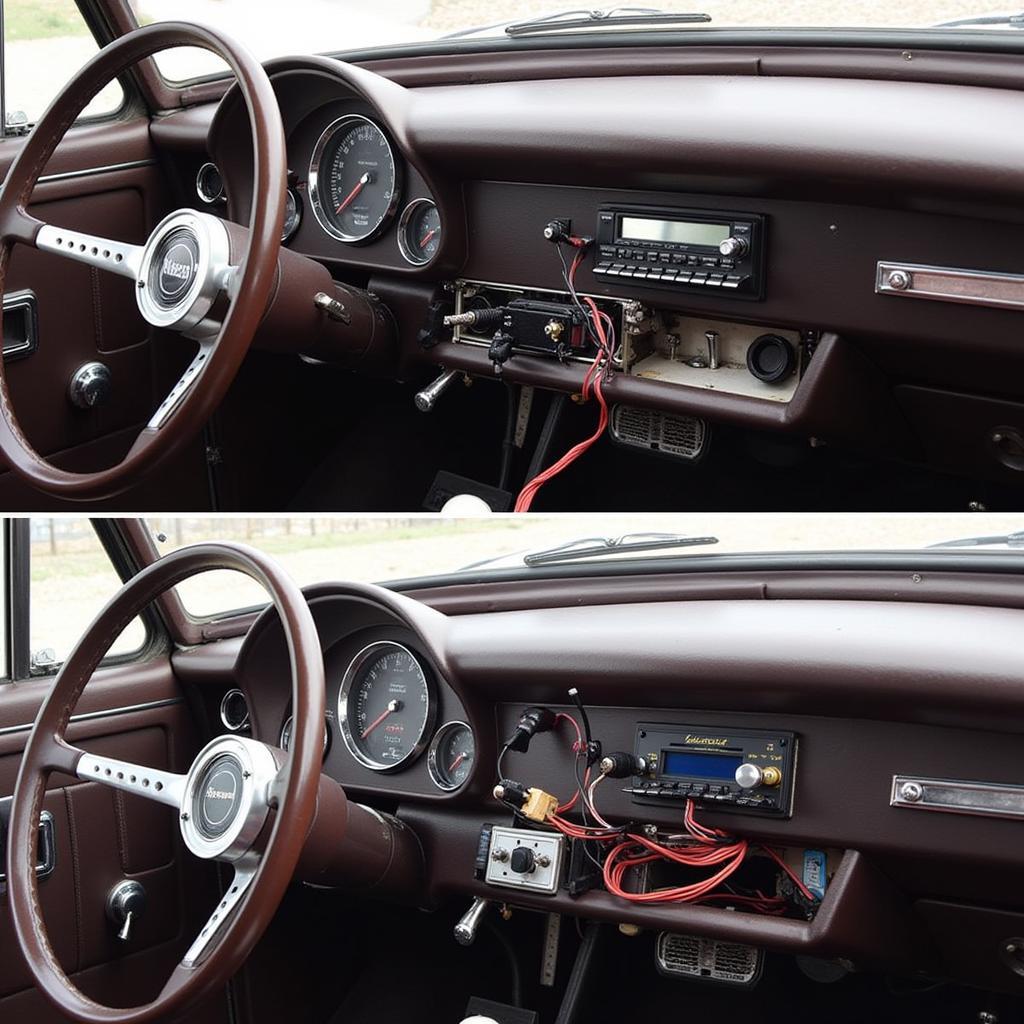The dreaded brake warning light illuminating on your Mercedes Sprinter dashboard can be a nerve-wracking experience. It signals a potential issue with your braking system, demanding immediate attention to ensure your safety and that of others on the road. This comprehensive guide will walk you through the common causes of the Mercedes Sprinter brake warning light, how to diagnose the problem, and potential solutions to get you back on track safely.
Understanding Your Sprinter’s Brake Warning System
Before diving into troubleshooting, it’s essential to understand how your Sprinter’s brake warning system works. The system utilizes sensors to monitor various components, including:
- Brake Fluid Level: A sensor constantly monitors the brake fluid level in the reservoir. If the level drops below a safe threshold, the brake warning light will illuminate.
- Brake Pad Wear: Many Sprinter models are equipped with brake pad wear sensors. These sensors trigger the warning light when the brake pads wear down to a certain thickness, indicating the need for replacement.
- Electronic Stability Program (ESP): The ESP system plays a crucial role in maintaining vehicle stability during cornering and evasive maneuvers. If a malfunction occurs within the ESP system, it can trigger the brake warning light.
- ABS System: The Anti-lock Braking System (ABS) prevents wheel lockup during hard braking. A fault within the ABS system, such as a malfunctioning wheel speed sensor, can also illuminate the brake warning light.
Common Causes of a Mercedes Sprinter Brake Warning Light
While the illuminated brake warning light signals a problem, pinpointing the exact cause requires further investigation. Here are some of the most common culprits:
1. Low Brake Fluid Level
One of the most frequent causes of the brake warning light is low brake fluid. This usually indicates a leak in the braking system.
Troubleshooting Tip:
- Check the brake fluid level. Park your Sprinter on a level surface and locate the brake fluid reservoir. The reservoir will typically have a “min” and “max” mark. If the fluid level is below the “min” mark, you’ll need to add brake fluid.
Important: If you need to add brake fluid frequently, it’s crucial to have your braking system inspected by a qualified mechanic immediately to identify and repair any leaks.
2. Worn Brake Pads
Worn brake pads are another common reason for the brake warning light to appear.
Troubleshooting Tip:
- Inspect your brake pads. If you’re comfortable with basic car maintenance, you can visually inspect your brake pads. Look through the spaces between the wheel spokes. The brake pad will be a metal plate with a friction material attached to it. If the friction material is thin or non-existent, your brake pads need replacing.
Note: Ignoring worn brake pads can lead to costly damage to your rotors and significantly reduce your braking efficiency.
3. Faulty Brake Light Switch
Your brake light switch, located under the brake pedal, signals the brake lights to illuminate when you press the pedal. A faulty switch can disrupt this signal and potentially trigger the brake warning light.
Troubleshooting Tip:
- Test your brake lights. Have someone observe the brake lights while you press the brake pedal. If the lights don’t illuminate, the brake light switch might be faulty and require replacement.
4. ABS Sensor Issues
A malfunctioning ABS sensor can disrupt the system’s ability to monitor wheel speed, triggering the brake warning light.
Troubleshooting Tip:
- Check for ABS warning lights. If the ABS warning light is also illuminated on your dashboard, it further suggests a potential issue with the ABS system.
5. Other Potential Causes
Beyond these common culprits, several other factors can contribute to the Mercedes Sprinter brake warning light:
- Faulty ABS Control Module
- Damaged ABS Tone Ring
- Wiring Issues
- Faulty Brake Caliper
Diagnosing the Problem: Advanced Diagnostics and Remote Solutions
While the troubleshooting tips above offer a starting point, accurately diagnosing the root cause often requires specialized equipment and expertise.
Advanced Diagnostics: Modern vehicles like the Sprinter rely heavily on electronics. A professional mechanic utilizes advanced diagnostic tools to read fault codes stored in your vehicle’s computer, providing precise insights into the issue.
Remote Software Solutions: Advancements in automotive technology have led to the rise of remote software solutions. These services allow qualified technicians to remotely access your Sprinter’s computer system, diagnose the problem, and even perform software updates or resets that can resolve certain brake warning light issues.
Resolving the Issue and Preventive Measures
Once the problem is diagnosed, the appropriate repairs can be undertaken. This may involve:
- Adding Brake Fluid: If low brake fluid is the culprit, topping it off and addressing any leaks in the system is crucial.
- Replacing Brake Pads and Rotors: Worn brake components should be replaced promptly to ensure optimal braking performance.
- Repairing or Replacing Faulty Sensors or Modules: Depending on the diagnostic results, repairs or replacements of ABS sensors, the brake light switch, or the ABS control module might be necessary.
Preventive Measures:
- Regular Brake Inspections: Adhere to the manufacturer’s recommended maintenance schedule for brake inspections and fluid flushes.
- Timely Brake Pad Replacement: Don’t wait for the brake warning light to come on before replacing your brake pads.
- Quality Brake Fluid: Always use high-quality brake fluid that meets your Sprinter’s specifications.
Conclusion
A Mercedes Sprinter brake warning light should never be ignored. By understanding the potential causes, performing basic troubleshooting, and seeking professional help when needed, you can address brake issues promptly and ensure the safety of yourself and others on the road. Remember, regular maintenance and proactive care are essential for a healthy and reliable braking system.

